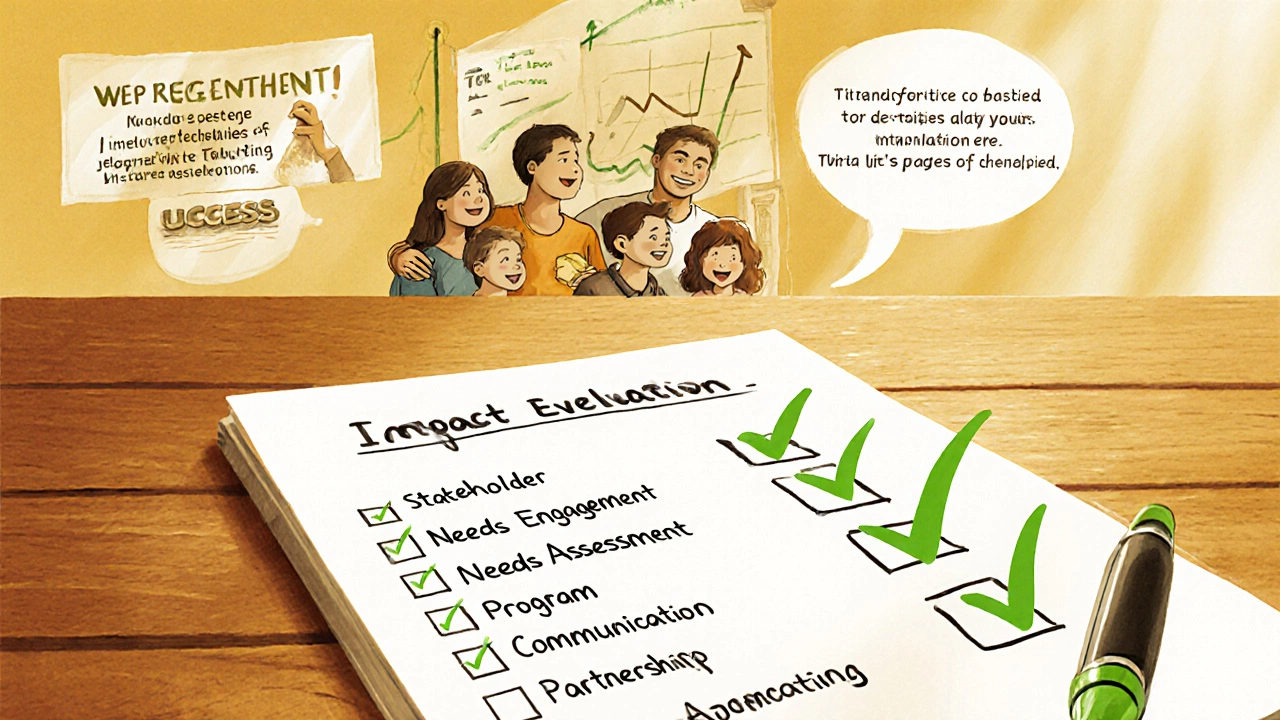Community Outreach Assessment Tool
Assess Your Outreach Program
Rate your organization's current outreach program across the six key aspects to identify strengths and areas for improvement.
Key Takeaways
- Outreach works best when you focus on six clear aspects.
- Each aspect has its own goal, tools and success signals.
- A simple checklist keeps you from missing any step.
- Real‑world examples show how the six aspects fit together.
- Common pitfalls are easy to spot and fix.
Understanding Community Outreach is a set of activities that connect an organization with local residents, groups and institutions to address shared needs and build lasting relationships
When a charity, a city council or a grassroots group talks about outreach, they’re really talking about reaching out, listening, and then acting together. It’s not a one‑off flyer or a single event; it’s a process that moves from early research to final impact reports. Getting the process right can mean the difference between a project that fizzles and one that becomes a permanent community asset.
The Six Core Aspects of Outreach
Think of the six aspects as the backbone of any successful outreach program. They overlap, they feed each other, and you can move back and forth between them as you learn more about the community you serve.
1. Stakeholder Engagement
Stakeholders are anyone who has an interest in the outcome - residents, local businesses, schools, faith groups, and even city officials. Engaging them early builds trust and uncovers hidden resources. Simple tactics include one‑on‑one coffee chats, focus groups, or an online poll that lets people voice what matters to them.
2. Needs Assessment
A needs assessment turns opinions into data. Survey tools like Google Forms, face‑to‑face interviews, or community mapping exercises help you rank problems by urgency and scale. The output is a priority list that guides every later decision.
3. Program Design
Design translates the priority list into concrete activities. Whether you’re planning a youth mentorship series, a food‑distribution hub, or a digital‑literacy workshop, the design stage defines objectives, timelines, and who will deliver each piece.
4. Communication Channels
Good communication meets people where they already are. Social media works for teens, local newspapers reach older adults, and community notice boards hit both. Mix channels, test messages, and keep the tone friendly - you’re inviting people to join, not lecturing them.
5. Partnership Building
Partners fill gaps in funding, expertise, or volunteer power. A nearby library might provide space, a local bakery could donate snack trays, and a university could lend research staff. Write a simple memorandum of understanding that spells out roles, so expectations stay clear.
6. Impact Evaluation
Evaluation answers the question, “Did we make a difference?” Use pre‑ and post‑surveys, attendance logs, or even simple stories from participants. The data not only proves success to funders but also highlights tweaks for the next round.
Side‑by‑Side Comparison of the Six Aspects
| Aspect | Main Goal | Typical Tools | Key Success Indicator |
|---|---|---|---|
| Stakeholder Engagement | Build trust and gather insights | Focus groups, coffee chats, surveys | Number of stakeholders actively participating |
| Needs Assessment | Identify and rank community needs | Community mapping, questionnaires | Clear priority list with ranked items |
| Program Design | Create actionable activities | Logic models, Gantt charts | Approved program plan with timelines |
| Communication Channels | Spread the word effectively | Social media, flyers, local radio | Engagement metrics (likes, RSVPs, foot traffic) |
| Partnership Building | Leverage external resources | MOU templates, joint events | Number of active partners and resources contributed |
| Impact Evaluation | Measure outcomes and learn | Pre/post surveys, attendance logs | Quantifiable change (e.g., % increase in food security) |
Putting It All Together: A Practical Checklist
- Identify key stakeholders and schedule introductory meetings.
- Run a rapid needs assessment - aim for at least 50 responses.
- Draft a program design document that maps each need to a specific activity.
- Select three communication channels that match your audience demographics.
- Approach at least two potential partners and formalize roles.
- Create an evaluation plan before the first activity launches.
Follow the list each month and you’ll see the process become smoother, not more chaotic.

Common Pitfalls and How to Avoid Them
- Skipping the needs assessment. Without data you risk offering services nobody wants.
- Relying on a single communication channel. Diversify to reach different age groups.
- Viewing partners as donors only. Involve them in planning for deeper commitment.
- Leaving evaluation to the end. Capture data as you go - it’s easier and more accurate.
- Assuming success after the first event. Treat outreach as an ongoing loop of learning.
Frequently Asked Questions
What is the first step in any outreach project?
Start by engaging stakeholders. Their insights shape the whole process and give you early buy‑in.
How often should I evaluate my outreach activities?
Collect baseline data before you launch, then do a quick check after each major event and a deeper review at the end of the cycle (typically quarterly or annually).
Can I use the same communication channel for all target groups?
It’s risky. Young adults prefer Instagram or TikTok, while seniors may rely on printed flyers or local radio. Mix channels to maximise reach.
What’s a quick way to find potential partners?
Map community assets - libraries, schools, churches, local businesses - and reach out with a short email that highlights mutual benefits.
How do I know if my impact evaluation is robust?
Look for clear before‑and‑after data, a sample size that represents your target group, and qualitative stories that add context.
By keeping these six aspects front‑and‑center, you turn a handful of good intentions into a sustainable community outreach engine that keeps delivering real benefits.
